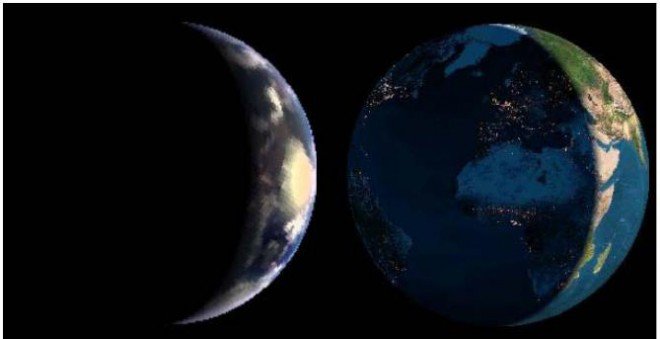
March 1, 2019
Research Highlight
Spotting the Glint of Extrasolar Oceans

True-color image from a model (left) compared to a view of Earth from the Earth and Moon Viewer (http://www.fourmilab.ch/cgi-bin/Earth/). A glint spot in the Indian Ocean can be clearly seen in the model image.Image credit: fourmilab.
In the search for habitable worlds beyond our solar system, the detection of liquid water at the surface of a planet is one of the most sought-after discoveries for today’s astrobiologists. Methods to detect surface water have been proposed, including rotational mapping and specular reflection (or the glint of light reflecting off an extrasolar ocean). However, both of these techniques could produce false positives.
A team of researchers recently used a simulation of Earth to address this issue and to help improve the robustness these extrasolar ocean detection methods. Their work takes into account the affect of clouds that cause forward-scattering of light, and landmasses that would cause the glint off of an ocean to ‘blink’ as the planet rotates. The results indicates that it could be possible to detect glint measurements for ‘between 1 and 10 habitable zone exoplanets orbiting the nearest G, K, and M dwarfs.’ The necessary observations would require the use of a ‘space-based, high-contrast, direct-imaging telescope with a diameter between 6 and 15 m.’
The study, “Detecting Ocean Glint on Exoplanets Using Multiphase Mapping,” was published in The Astronomical Journal. The work was supported by the Nexus for Exoplanet System Science (NExSS). NExSS is a NASA research coordination network supported in part by the NASA Astrobiology Program. This program element is shared between NASA’s Planetary Science Division (PSD) and the Astrophysics Division.